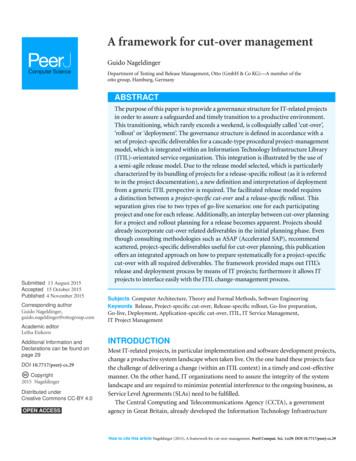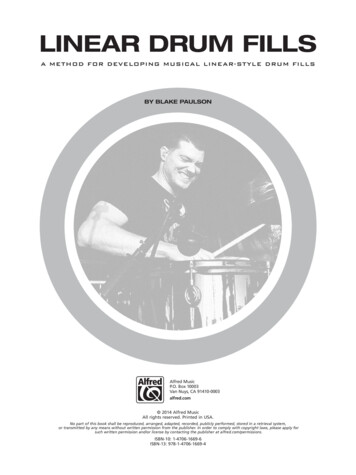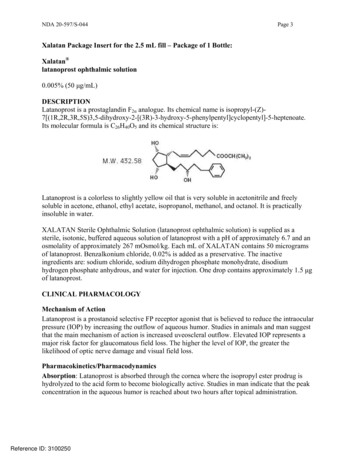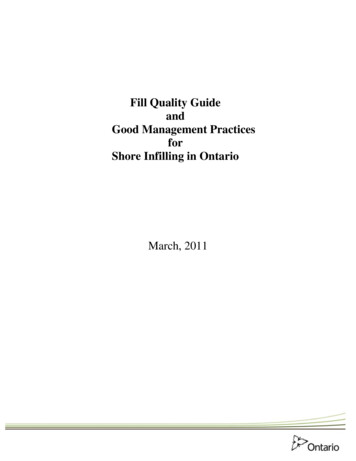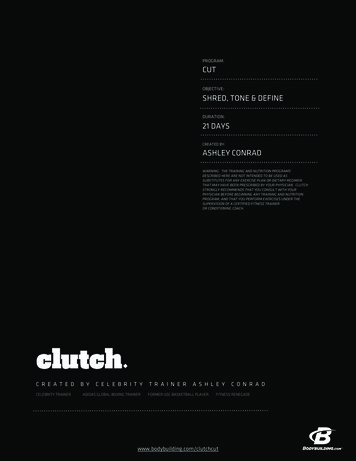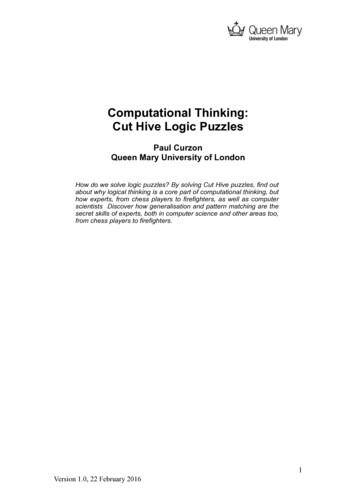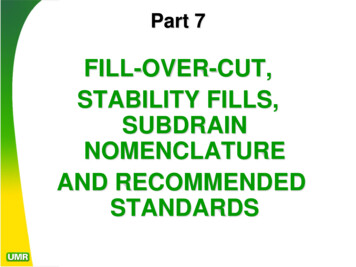
Transcription
Part 7FILL-OVER-CUT,STABILITY FILLS,SUBDRAINNOMENCLATUREAND RECOMMENDEDSTANDARDS
Classic Fill-over-cut situation created by massgrading of hilly areas.
FILL OVER CUT Fills placed above cut slopes are a special case thatdemands attention to details, especiallyoverexcavation. This shows the design standardemployed by Orange County in the late 1960s.
Fill over cut situation where the topsoil was notadequately overexcavated, leaving a potentiallylow strength horizon between the cut and thefill.
The toe-of-fill keyway on a fill-over-cut situationshould be excavated across the entire bench,as shown above; so a small island of nativematerial will not be left between the cut and fill.
Inadequate cut-over-fillsituation revealed inutility trench for sewerstorm drain.This view showsengineered fill over athick sequence ofnative soils andweathered rockThis points to thereason why on-scenegrading inspection isso important duringconstruction
Stability FillsStability fills are engineeredfill embankments constructedagainst potentially unstableor actively eroding slopesThey are typically fairlynarrow, with limitedsubdrainage.
Typical designstandards forstability fillsThe may be fairlythin, down to justone equipmentwidth (10 to 12 ft)Subdrainage shouldbe employed ifevidence of pastseepage is notedduring excavation
Colloquial terminology used to describe various kindsof subdrainage measures.You can never have too much subdrainage, but youcan often have too little
Recommended standards for sidehillembankments supporting structures, takenfrom Rogers (1992). Note 15% vertical filldifferential beneath structural footprint
Excavation and Grading PlanRed cut areas; light blue fill; anddk blue colluvial filled ravines that need tobe over-excavated and back-filled
International Building Code (1997) The International Code Council (ICC) is based in Falls Church, VA.It was formed in 1994 by combining the three model Americanbuilding codes published by the Building Officials CodeAdministrators (BOCA), founded in 1915; the InternationalConference of Building Officials (ICBO), founded in 1927; and theSouthern Building Code Congress International (SBCCI), foundedin 1940. The ICC produced the first edition of their International BuildingCode (IBC) in 1997, intended to be the new national standard forthe United States. The 1997 IBC was based on the 1997 UniformBuilding Code (UBC), but without the Chapter 33 Appendices forExcavation & Grading (these amendments are part of theCalifornia Building Code). Amendments to the new IBC wereissued in 2000, 2003, 2006, and 2009. Forty-seven (47) states including Washington, DC, the U.SDepartment of Defense, and the National Park Service, hadadopted the IBC or parts of it into government regulations by 2009.Local building code officials mainly regulate the enforcement ofthe IBC.
About the Presenter Dr. Roy Letourneau (on left) and Dr. J.David Rogers (on right) in September1997. Dr. Letourneau is the son of R. G.“Bob” Letourneau (1888-1969), theinventor of the modern bulldozer andscrapper. Rogers holds the Karl F.Hasselmann Chair in GeologicalEngineering at the Missouri Universityof Science & Technology. He can becontacted at rogersda@mst.edu Professor Rogers ownedengineering consulting firms in LosAngeles and San Francisco and ageneral engineering contracting firmprior to entering academia.He served as Chair of the BuildingCodes Committee of the Associationof Environmental & EngineeringGeologists between 1990-97 andwas AEG representative to theInternational Conference of BuildingOfficials (ICBO) while the 1991,1994 and 1997 UBC’s and 2000IBC were developed.Since 1984 he has taught shortcourses on grading and excavationcodes for ICBO, the University ofWisconsin, University of California,the Association of Bay AreaGovernments and the City of LosAngeles.
courses on grading and excavation codes for ICBO, the University of Wisconsin, University of California, the Association of Bay Area Governments and the City of Los Angeles. Dr. Roy Letourneau (on left) and Dr. J. David Rogers (on right) in September 1997. Dr. Letourneau is

